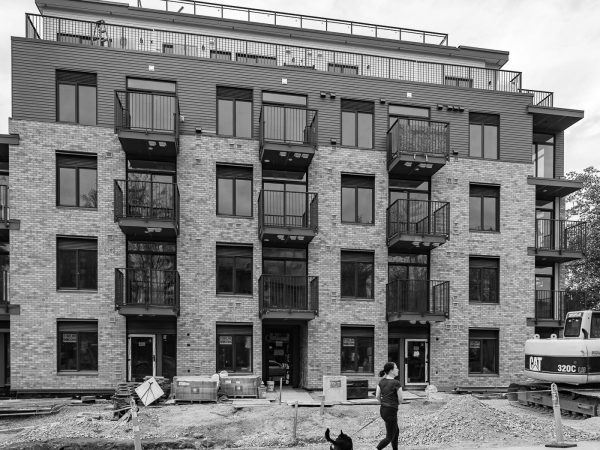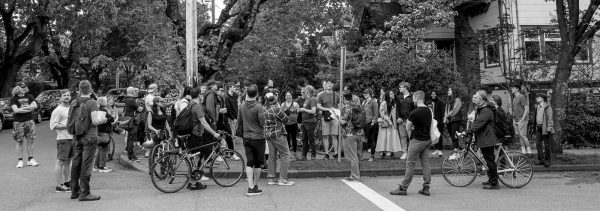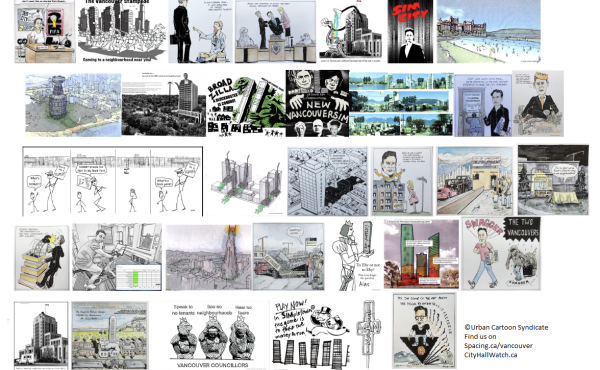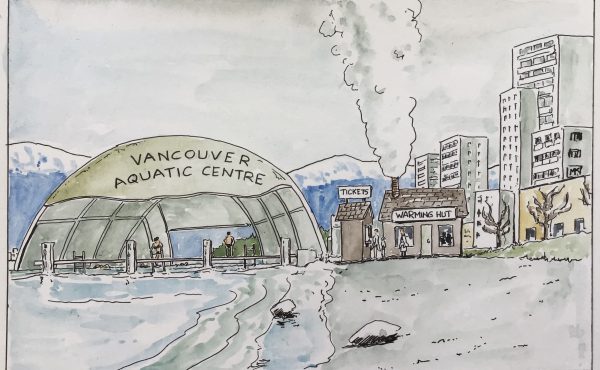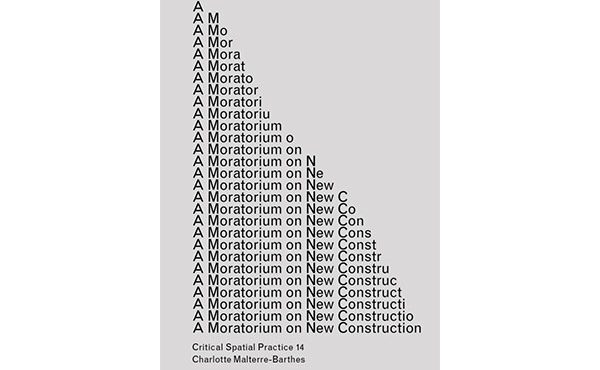
$2,650 to $4,200 per month—affordable?
“Dad, that is literally twice the rent I am paying now!” My 30-something son was looking over my shoulder at the website advertising one of the first “affordable rental housing” projects nearing completion in Vancouver. It was announced with great fanfare 2-1/2 years ago, a partnership between the city of Vancouver, BC Housing, the province, and a private developer.
My son rents a studio in an older, three-storey walk-up building that is great for his bachelor lifestyle except for the fact it is at ground zero for the Broadway Plan, a couple of blocks from the Broadway/Granville SkyTrain Station. We’ve talked about the disruption that plan might mean for his block, which is currently comprised of a mix of older rental and strata buildings and one 14-storey strata high-rise, which the Broadway Plan now ironically calls “mid-rise.”
I recently attended a Jane’s Walk event sponsored by Abundant Housing Vancouver (AHV), called Kitsilano Missing Midrise Walking Tour. The guided walk through Kits north of Broadway somehow missed all of the ten current high-rise proposals in Kits under the Broadway Plan that mostly start by demolishing existing affordable rentals. I can’t say how many rentals will be demo’d—the city has closed its renter support office and does not keep data about rental demolitions—at least not in a place accessible to ordinary citizens.
A suitable City Conversation about this walk eluded me until reality gifted me, in the form of this new rental website for the project at Larch and 2nd Avenue pictured above, which featured prominently in the AHV guided walk as a soon-to-be-completed “affordable” rental housing project.
Let’s examine what AHV’s “affordable” means in the context of this project’s rental website:
- Rents for the smallest studio starting at $2599 per month. That’s the one that’s twice what my son currently pays, and his is a nicer floor plan;
- One-bedroom rents starting at $2,999;
- Two-bedroom rental starting at $3,999;
- The three-bedroom units touted in the project’s original BC Housing announcement are a no-show on the rental website—no idea where they went.
This project was announced in December 2021 by BC Housing as a partnership between them, the developer, and the City of Vancouver. At that time, according to the announcement:
- The Province was providing $31.8 million in financing;
- 80% of the resulting homes were to be targeted “at- or below-market level rents restricted to middle-income households within the provincial middle-income limits.” Again, that’s my son;
- The remaining 20% of homes “will be tenanted at moderate-income rent levels and to households earning less than $80,000 per year.”
Simple math tells me that the cheapest studio in the building will consume 39% of that $80,000 per annum “household” income—and that’s for a studio! For the cheapest one-bedroom unit, count on a 45% hit, 60% of income for a two-bedroom home.
Looking at this sad math another way, at a maximum of 30% of gross income devoted to shelter, the usual limit for loans and mortgages, the studio occupant needs an income of more than $103,000 before they have sufficient “spare” cash for a bank loan. For the one-bedroom it’s more than $119,000, and for the two-bedroom you’ll need more than $159,000. How does your income stack up against those numbers?
How many Jane’s walkers can afford $47,000+ per year rent?
I believe that cherry-picking specific homes in the rich tapestry that is Kitsilano to support an agenda that is really abundant real-estate development rather than affordable housing is designed to create wedge issues between Vancouver residents that will not be resolved by upzoning everywhere. As for my son, he concluded after one of his signature hugs and another beer:
“When they come for my building to build one of these, I’ll be forced to leave the city. And at those rents, I won’t be back.”
***
This was originally published on City Conversations.
**
Brian Palmquist is a Vancouver-based architect, building envelope and building code consultant, and LEED Accredited Professional (the first green building system). He is semi-retired, still teaching, writing, and consulting a bit, but not beholden to any client or city hall. These conversations mix real discussion with research and observations based on a 50-year career including the planning, design, and construction of almost every type and scale of project. He is the author of the Amazon bestseller and AIBC Construction Administration course text, “An Architect’s Guide to Construction.” and hoping to start a book about how we can accommodate a growing population in the cities we love in 2024.

